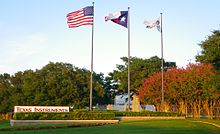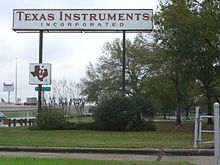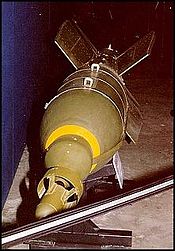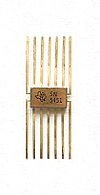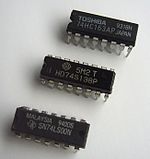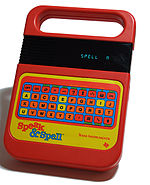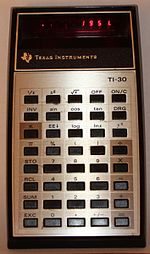- Texas Instruments
-
Texas Instruments 
Type Public Traded as NYSE: TXN Industry Semiconductor Founded 1930 (as Geophysical Service Incorporated)
1951 (as Texas Instruments)Headquarters Dallas, Texas, United States Key people Rich Templeton
(Chairman, President and CEO)Products Analog electronics
Calculators
Digital signal processors
Digital light processors
Integrated circuits
Radio-frequency identificationRevenue  US$ 13.966 billion (2010)[1]
US$ 13.966 billion (2010)[1]Operating income  US$ 4.551 billion (2010)[1]
US$ 4.551 billion (2010)[1]Net income  US$ 3.228 billion (2010)[1]
US$ 3.228 billion (2010)[1]Total assets  US$ 13.401 billion (2010)[1]
US$ 13.401 billion (2010)[1]Total equity  US$ 10.437 billion (2010)[1]
US$ 10.437 billion (2010)[1]Employees 35,100 (Sept 2011) Website TI.com References: [2][3] Coordinates: 32°54′33″N 96°45′04″W / 32.909256°N 96.751054°W
Texas Instruments Inc. (NYSE: TXN), widely known as TI, is an American company based in Dallas, Texas, United States,[4] which develops and commercializes semiconductor and computer technology. TI is the third largest manufacturer of semiconductors worldwide[5] after Intel and Samsung, the second largest supplier of chips for cellular handsets after Qualcomm, and the largest producer of digital signal processors (DSPs) and analog semiconductors, among a wide range of other semiconductor products.[6] After the acquisition of National Semiconductor in 2011, the company has a combined portfolio of nearly 45,000 analog products, customer design tools.[7] In 2011, Texas Instruments ranked 175 in the Fortune 500.
Contents
- 1 History
- 2 Company Divisions
- 3 Industry recognition
- 4 Acquisitions
- 5 Corporate governance
- 6 See also
- 7 Notes
- 8 References
- 9 External links
History
Texas Instruments was founded by Cecil H. Green, J. Erik Jonsson, Eugene McDermott, and Patrick E. Haggerty in 1951. McDermott was one of the original founders of Geophysical Service in 1930. McDermott, Green, and Jonsson were GSI employees who purchased the company in 1941 on the day before Pearl Harbor was attacked. In November, 1945, Patrick Haggerty was hired as general manager of the Laboratory and Manufacturing (L&M) division. By 1951, the L&M division, with its defense contracts, was growing faster than GSI's Geophysical division. The company was reorganized and initially renamed General Instruments Inc. Because there already existed a firm named General Instrument, the company was rechristened Texas Instruments that same year. Geophysical Service Inc. became a subsidiary of Texas Instruments which it remained until early 1988, when most of GSI was sold to the Halliburton Company.
Texas Instruments exists to create, make and market useful products and services to satisfy the needs of its customers throughout the world.[8]
— Patrick Haggerty, Texas Instruments Statement of Purpose
Geophysical Service Incorporated
In 1930, Dr. J. Clarence Karcher and Eugene McDermott founded Geophysical Service, an early provider of seismic exploration services to the petroleum industry. In 1939 the company reorganized as Coronado Corp., an oil company with Geophysical Service Inc (GSI), now as a subsidiary. On December 6, 1941, McDermott along with three other GSI employees, J. Erik Jonsson, Cecil H. Green, and H.B. Peacock purchased GSI. During World War II, GSI expanded their services to include electronics for the U.S. Army, Signal Corps, and the U.S. Navy. In 1951 the company changed its name to Texas Instruments, GSI becoming a wholly owned subsidiary of the new company.
An early success story for TI-GSI came in the 1950s when GSI was able (under a Top Secret government contract) to monitor the Soviet Union's underground nuclear weapons testing from outcrop bedrock found in Oklahoma.[citation needed]
Texas Instruments also continued to manufacture equipment for use in the seismic industry, and GSI continued to provide seismic services. After selling (and repurchasing) GSI, TI finally sold the company to Halliburton in 1988, at which point GSI ceased to exist as a separate entity.
Defense electronics
Texas Instruments was also active in the defense electronics market starting in 1942 with submarine detection equipment, building on the seismic exploration technology developed for the oil industry. This business was known over time as the Laboratory & Manufacturing Division, the Apparatus Division, the Equipment Group and the Defense Systems & Electronics Group (DSEG).
During the early 80s Texas Instruments instituted a quality program which included Juran training, as well as promoting Statistical process control, Taguchi methods and Design for Six Sigma. In the late 80s, the company, along with Eastman Kodak and Allied Signal, began involvement with Motorola institutionalizing Motorola's Six Sigma methodology.[9] Motorola, who originally developed the Six Sigma methodology, began this work in 1982. In 1992 the DSEG division of Texas Instruments' quality improvement efforts were rewarded by winning the Malcolm Baldrige National Quality Award for manufacturing.
The following are some of the major programs of the former TI defense group.[10]
Infrared and Radar systems
In 1956 TI began research on infrared technology that led to several line scanner contracts and with the addition of a second scan mirror the invention of the first forward looking infrared (FLIR) in 1963 with production beginning in 1966. In 1972 TI invented the Common Module FLIR concept, greatly reducing cost and allowing reuse of common components.
TI went on to produce side-looking radar systems, the first terrain following radar and surveillance radar systems for both the military and FAA. TI demonstrated the first solid-state radar called Molecular Electronics for Radar Applications (MERA). In 1976 TI developed a microwave landing system prototype. In 1984 TI developed the first inverse synthetic aperture radar (ISAR). The first single-chip gallium arsenide radar module was developed. In 1991 the Military Microwave Integrated Circuit (MIMIC) program was initiated – a joint effort with Raytheon.[citation needed]
Missiles and Laser-guided bombs
In 1961 TI won the guidance and control system contract for the defense suppression AGM-45 Shrike anti-radiation missile. This led later to the prime on the high-speed anti-radiation missile (AGM-88 HARM) development contract in 1974 and production in 1981.
In 1964 TI began development of the first laser guidance system for precision-guided munitions (PGM) leading to the Paveway series of laser-guided bombs (LGB)s. The first LGB was the BOLT-117.
In 1969 TI won the Harpoon (missile) Seeker contract. In 1986 TI won the Army FGM-148 Javelin fire-and-forget man portable anti-tank guided missile in a joint venture with Martin Marietta. In 1991 TI was awarded the contract for the AGM-154 Joint Standoff Weapon (JSOW).
Military computers
Because of TI's dominance in military temperature range (silicon) transistors and integrated circuits (ICs), TI won contracts for the first IC-based computer for the U.S. Air Force in 1961 and for ICs for the Minuteman Missile the following year. In 1968 TI developed the data systems for Mariner Program. In 1991 TI won the F-22 Radar and Computer development contract.
Divestiture to Raytheon
As the defense industry consolidated, TI sold its defense business to Raytheon in 1997 for $2.95 billion. The Department of Justice required that Raytheon divest the TI Monolithic Microwave Integrated Circuit (MMIC) operations after closing the transaction.[11] The TI MMIC business accounted for less than $40 million in 1996 revenues, or roughly two percent of the $1.8 billion in total TI defense revenues was sold to TriQuint Semiconductor, Inc. Raytheon retained its own existing MMIC capabilities and has the right to license TI's MMIC technology for use in future product applications from TriQuint.[12]
Shortly after Raytheon acquired TI DSEG, Raytheon then acquired Hughes Aircraft from General Motors Raytheon then owned TI's Mercury Cadmium Telluride detector business and Infrared (IR) systems group. In California, it also had Hughes infrared detector and an IR systems business. When again the US government forced Raytheon to divest itself of a duplicate capability, the company kept the TI IR systems business and the Hughes detector business. As a result of these acquisitions these former arch rivals of TI systems and Hughes detectors work together.[13]
Immediately after acquisition, DSEG was known as Raytheon TI Systems (RTIS).[14] It is now fully integrated into Raytheon and this designation no longer exists.
Semiconductors
Early in 1952 Texas Instruments purchased a patent license to produce (germanium) transistors from Western Electric Co., the manufacturing arm of AT&T, for $25 000. By the end of that year, it was already manufacturing and selling them. TI Vice President Patrick Haggerty was the visionary at TI who realized the future of this technology in the electronics industry. Later that year responding to an ad in the New York Times for a research director, Gordon K. Teal was hired by Haggerty. Teal, who worked for Bell Labs at Murray Hill, New Jersey but was from Dallas, desired to return to his native Texas.
Teal started at TI on January 1, 1953, bringing with him his expertise in growing semiconductor crystals. Haggerty had hired him to establish a team of scientists and engineers to keep TI at the leading edge of the new and rapidly expanding semiconductor industry. Teal's first assignment was to organize what became TI's Central Research Laboratories (CRL). Because of Teal's background, this new department was based on Bell Labs.
Among his new hires was Willis Adcock who joined TI early in 1953. Adcock, who like Teal was a physical chemist, began leading a small research group focused on the task of fabricating "grown-junction silicon single-crystal small-signal transistors. Adcock later became the first TI Principal Fellow.[15]
First silicon transistor and integrated circuits
In January 1954, M Tanenbaum et al. at Bell Labs created the first workable silicon transistor.[16] This work was reported in the spring of 1954 at the IRE off-the-record conference on Solid State Devices and later published in the Journal of Applied Physics, 26, 686-691(1955). Working independently in April 1954, Gordon Teal at TI created the first commercial silicon transistor and tested it on April 14, 1954. On May 10, 1954 at the Institute of Radio Engineers (IRE) National Conference on Airborne Electronics, in Dayton, Ohio. Teal also presented a paper, "Some Recent Developments in Silicon and Germanium Materials and Devices," at this conference.[17]
In 1954, Texas Instruments designed and manufactured the first transistor radio. The Regency TR-1 used germanium transistors, as silicon transistors were much more expensive at the time. This was an effort by Haggerty to increase market demand for transistors.
Jack Kilby, an employee at TI's Central Research Labs, invented the integrated circuit in 1958. Kilby recorded his initial ideas concerning the integrated circuit in July 1958 and successfully demonstrated the world's first working integrated circuit on September 12, 1958.[18] Six months later Robert Noyce of Fairchild Semiconductor (who went on to co-found Intel) independently developed the integrated circuit with integrated interconnect, and is also considered an inventor of the integrated circuit.[19] Kilby won the 2000 Nobel Prize in Physics for his part of the invention of the integrated circuit.[20] Noyce's chip, made at Fairchild, was made of silicon, while Kilby's chip was made of germanium. In 2008 TI named its new development laboratory "Kilby Labs" after Jack Kilby.[21]
In 2011, Intel, Samsung, LG, ST-Ericsson, Huawei's HiSilicon Technologies subsidiary, Via Telecom and three other undisclosed chipmakers licensed the C2C link specification developed by Arteris Inc. and Texas Instruments.[22]
Standard TTL
The 7400 series of transistor-transistor logic (TTL) chips, developed by Texas Instruments in the 1960s, popularized the use of integrated circuits in computer logic. The military grade version of this was the 5400 series.[citation needed]
Microprocessor
Texas Instruments invented the hand-held calculator in 1967 (they cost $2,500 each) and the single-chip microcomputer in 1971, and was assigned the first patent on a single-chip microprocessor (invented by Gary Boone) on September 4, 1973.[23] This was disputed by Gilbert Hyatt, formerly of the Micro Computer Company, in August 1990 when he was awarded a patent superseding TI's. This was over-turned on June 19, 1996 in favor of TI.[24] (Note: Intel is usually given credit with Texas Instruments for the almost-simultaneous invention of the microprocessor.)
First speech synthesis chip
In 1978, Texas Instruments introduced the first single-chip LPC speech synthesizer.[25] In 1976 TI began a feasibility study memory intensive applications for bubble memory then being developed. They soon focused on speech applications. This resulted in the development the TMC0280 one-chip Linear predictive coding (LPC) speech synthesizer which was the first time a single silicon chip had electronically replicated the human voice.[10][26] This was used in several TI commercial products beginning with Speak & Spell which was introduced at the Summer Consumer Electronics Show in June 1978. In 2001 TI left the speech synthesis business, selling it to Sensory Inc. of Santa Clara, California.
Consumer electronics and computers
TI continued to be active in the consumer electronics market through the 1970s and 1980s. Early on this also included two digital clock models one for desk and the other a bedside alarm. From this sprang what became the Time Products Division with the LED watches. Though these LED watches enjoyed early commercial success thanks to excellent quality, it was short lived due to poor battery life. LEDs were replaced with LCD watches for a short time but these could not compete because of styling issues, excessive makes and models, and price points. The watches were manufactured in Dallas and then Lubbock Texas. In 1978, Texas Instruments introduced the first single chip speech synthesizer and incorporated it in a product called Speak & Spell, which was later immortalized in the movie E.T. the Extra-Terrestrial. Several spin-offs, such as the Speak & Read and Speak & Math, were introduced soon thereafter.
In 1979, TI entered the home computer market with the TI99/4, a competitor to such entries as the Apple II, Tandy/RadioShack TRS-80 and the later Atari 400/800 series, Commodore VIC-20 and Commodore 64. It discontinued the TI-99/4A (1981), the sequel to the 99/4, in late 1983 amidst an intense price war waged primarily against Commodore. At the 1983 Winter CES, TI showed models 99/2 and the Compact Computer 40 (CC-40), the latter aimed at professional users. The TI Professional (1983) ultimately joined the ranks of the many unsuccessful DOS and x86-based—but non-compatible—competitors to the IBM PC. (The founders of Compaq, an early leader in PC compatibles, all came from TI.) The company for years successfully made and sold PC-compatible laptops before withdrawing from the market and selling its product line to Acer in 1997.
Artificial intelligence
Texas Instruments was active in the 1980s in the area of artificial intelligence. It developed and sold the Explorer computer family of LISP machines. For the Explorer a special 32bit LISP microprocessor was developed, which was used in the Explorer II and the TI MicroExplorer (a LISP Machine on a NuBus board for the Apple Macintosh).
Sensors and controls
Texas Instruments was a major OEM of sensor, control, protection, and RFID products for the automotive, appliance, aircraft, and other industries. The S&C division was headquartered in Attleboro, Massachusetts.
In 2006, Bain Capital LLC, a private equity firm, purchased the Sensors & Controls division for $3.0 billion in cash.[27] The RFID portion of the division remained part of TI, transferring to the Application Specific Products business unit of the Semiconductor division, with the newly formed independent company based in Attleboro taking the name Sensata Technologies.
Software
TI sold its software division (along with its main product, the IEF) to Sterling Software in 1997. It is now part of Computer Associates. TI still owns small pieces of software though, i.e. software for calculators like TI Interactive!. TI also creates a significant amount of target software for its Digital Signal Processors, along with host based tools for creating DSP applications.
Company Divisions
Today, TI is made up of two main divisions: Semiconductors (SC) and Educational Technology (ET).
Semiconductors
Semiconductor products account for approximately 96 percent of TI's revenues. TI's semiconductor-related product areas include digital signal processors in the TMS320 series, high speed digital-to-analog and analog-to-digital converters, power management solutions, and high performance analog circuits.
TI’s Wireless Business Unit (WBU) produces wireless solutions for products such as smartphones and eBooks, tablets, consumer electronics and other portable devices. Wireless communications has been a primary focus for TI, with around 50 percent of all cellular phones sold worldwide containing TI chips.[citation needed]
The Mixed Signal Automotive group is a business unit that manufactures mixed signal and analog solutions for transportation and automotive applications. In the power space, this unit produces DC/DC Controllers and Converters, LDOs (Low Dropout Voltage Regulators), Voltage References and Voltage Supervisors. In the networking space, MSA has solutions for CAN and LIN. Safety-related solutions include airbags and anti-lock braking.
Signal Processing
Digital Light Processing is a trademark under which Texas Instruments sells technology regarding TVs and Video Projectors.[28]
Another business unit of the Semiconductor division called Application Specific Products (ASP) develops specific products that cater to a broad range of DSP applications, such as digital still cameras, cable modems, Voice over IP (VOIP), streaming media, speech compression and recognition, wireless LAN and gateway products (residential and central office), and RFID.
TI makes a broad range of digital signal processors and a suite of tools called eXpressDSP, used to develop applications on these chips.
Microcontrollers and Processors
Texas Instruments maintains several lines of microcontrollers, including:[29]
- MSP430: low cost, low power consumption, and general purpose 16-bit MCU for use in embedded applications
- TMS320C2xxx: 16 and 32 bit MCU family optimized for real-time control applications.
- C24X: 16 bit, fixed point, 20 to 40 MHz
- C28X: 32 bit, fixed or floating point, 100 to 150 MHz
- Stellaris ARM Cortex-M3 based 32-bit MCU family
In the past, TI has also sold microcontrollers based on ARM7 (TMS470) and 8051 cores.
In addition to its microcontrollers, Texas Instruments also produces several multi-core processor lines.
- OMAP systems-on-chips (SoC's) are designed for low-powered applications, and originally targeted mobile phones. As a rule they contain an ARM application processor (currently Cortex-A8, previously ARM11 or ARM9), a DSP (currently C64x, previously often C55), and sometimes other cores.
- DaVinci SoC's contain a C64 series DSP core, an ARM9 core for applications processing, and specialized video processing peripherals.
Competitors
TI has always been among the Top 10 of the semiconductor sales leaders[citation needed]. In 2005, TI was number 3, after Intel and Samsung, and ahead of Toshiba and STMicroelectronics. For more information, refer to the Semiconductor sales leaders by year. Some of its main competitors include Microchip Technology, Cypress Semiconductor, Integrated Device Technology, Qualcomm, Samsung Electronics, and Xilinx.
TI has the largest market share in the analog semiconductor industry which has an estimated market TAM exceeding US$37 Billion. TI is reported to have 14% of the market, leading ahead of competitors ST Microelectronics, Infineon and NXP Semiconductors according to latest reports[30] from Gartner.
Educational technology
Texas Instruments produces a range of calculators, with the TI-30 being one of the most popular early calculators. TI has also developed a line of graphing calculators, the first being the TI-81, and most popular being the TI-83 Plus (with the TI-84 Plus being an updated equivalent).
TI calculator community
In the 1990s, with the advent of TI's graphing calculator series, programming became popular among some students. The TI-8x series of calculators (beginning with the TI-81) came with a built-in BASIC interpreter, through which simple programs could be created. The TI-85 was the first TI calculator to allow assembly programming (via a shell called "ZShell"), and the TI-83 was the first in the series to receive native assembly. While the earlier BASIC programs were relatively simple applications or small games, the modern assembly-based programs rival what one might find on a Game Boy or PDA.[citation needed]
Around the same time that these programs were first being written, personal web pages were becoming popular (through services such as Angelfire and GeoCities), and programmers began creating websites to host their work, along with tutorials and other calculator-relevant information. This led to the formation of TI calculator webrings, and eventually a few large communities, including the now-defunct TI-Files, and active titalc.org.[31]
TI graphing calculators generally fall into two distinct groups, those powered by the Zilog Z80 and those running on the Motorola 68000 series. Although a derivative of the Z80 was in the original Game Boy, the 68000 is far more powerful, and therefore better suited for gaming and processor-intensive applications.
Both these lines of calculators are locked by TI to disable use of custom flash applications and custom operating systems (standard applications are however freely usable), through the signing of this software, with checks in the hardware. However the keys used were found by brute force and published in 2009. TI responded by sending invalid DMCA takedown notices, causing the Texas Instruments signing key controversy. However, at least one of the receivers filed a DMCA Section 512 counter-notice, to which TI has not responded, and the keys are now available again. Enthusiasts had already been creating their own operating systems before the finding of the keys, which could be installed with other methods.[32]
The TI-84 Plus Silver Edition comes preloaded with several student-oriented apps, including App4Math, a computer algebra system developed for the calculator.
In 2007, TI released the TI-Nspire family of calculators, as well as computer software that has similar capabilities to the calculators.
There is an ongoing debate among financial calculator fans as to whether the TI BA II Plus is superior to the Hewlett Packard HP-12C from 1981.[citation needed] The TI BA II Plus continues to maintain popularity due to its simple and intuitive layout compared to the HP 12c (which uses reverse polish notation). The TI BA II Plus and the TI BA II Plus Professional version are two of only four calculators permissible in the Chartered Financial Analyst exams (the others being the HP-12C and the HP-12C Platinum).[33]
There are many TI calculators still selling without graphing capabilities.[34] The TI-30 has been replaced by the TI-30X IIS. There are some financial calculators for sale on the TI website.
Industry recognition
In 2007, Texas Instruments was awarded the Manufacturer of the Year for Global Supply Chain Excellence by World Trade magazine.[35]
In five consecutive years (2007 through 2011), TI made it to the list of most ethical companies in the world,[36][37][38][39][40] compiled by Ethisphere Institute. TI is the only company to appear in all five years' lists in the Electronics/Semiconductor category.
A more complete list of TI's awards and recognition can be found at the Texas Instruments website.[41]
Acquisitions
- In 1997, TI acquired Amati Communications for $395 million.[42]
- In 1998, TI acquired GO DSP.[43]
- In 1999, TI acquired Butterfly VLSI, Ltd. for approximately $50 million.[44]
- In 1999, TI acquired Telogy Networks for $457 million.[45]
- In 2000, TI acquired Burr-Brown Corporation for $7.6 billion.[46]
- In 2009, TI acquired Luminary Micro.[47][48]
- In 2011, TI acquired National Semiconductor
National Semiconductor acquisition
On April 4, 2011, Texas Instruments announced that it has agreed to buy National Semiconductor for $6.5 billion in cash. Texas Instruments will pay $25 per share of National Semiconductor stock. This is an 80% premium over the share price of $14.07 as of April 4, 2011 close. The deal made Texas Instruments one of the world's largest makers of analog technology components.[3][49][50][51][52] On September 19, 2011, the Chinese minister approved the merger, the last approval required. The companies formally merged on September 23, 2011.[53]
Corporate governance
- David L. Boren[54]
- David R. Goode[54]
- Ruth J. Simmons[54]
- Christine Todd Whitman[54]
See also
Notes
- ^ a b c d e "2010 Form 10-K, Texas Instruments Incorporated". United States Securities and Exchange Commission. http://www.sec.gov/Archives/edgar/data/97476/000114036111012312/form10-k.htm.
- ^ "Investor FAQs". Texas Instruments. http://www.ti.com/corp/docs/investor/faqs.shtml#c1. Retrieved 2007-01-29.
- ^ a b Ian King; Tom Giles (ed); Joseph Galante; Diane Anderson; Nick Turner (ed) (5 April 2011). "Texas Instruments Bets Sales Army Can Spur National’s Growth". Bloomberg Businessweek (Bloomberg). OCLC 42637019. http://www.businessweek.com/news/2011-04-05/texas-instruments-bets-sales-army-can-spur-national-s-growth.html. Retrieved 6 April 2011.
- ^ "TI Mailing Address." Texas Instruments. Retrieved on June 12, 2009.
- ^ "Texas Instruments to buy National Semiconductor". BBC News. April 5, 2011. http://www.bbc.co.uk/news/business-12969523.
- ^ Databeans.net
- ^ "Texas Instruments Closes $6.5B Acquisition Of National Semiconductor". http://techcrunch.com/2011/09/23/texas-instruments-closes-6-5b-acquisition-of-national-semiconductor/?utm_source=feedburner&utm_medium=feed&utm_campaign=Feed%3A+Techcrunch+%28TechCrunch%29. Retrieved September 23, 2011.
- ^ The Corporation and Innovation, Haggerty, Patrick, Strategic Management Journal, Vol. 2, 97-118 (1981)
- ^ Hendricks, C.A.; Kelbaugh, R (1998). "Implementing Six Sigma at GE". The Journal of Quality and Participation 21 (4): 48–53. http://findarticles.com/p/articles/mi_qa3616/is_199807/ai_n8794756.
- ^ a b TI web site history page,(c. 2008), (HTML), Texas Instruments, accessed September 6, 2008.
- ^ "Raytheon announces Justice Department approval of Texas Instruments acquisition". Business Wire. July 2, 1997. http://findarticles.com/p/articles/mi_m0EIN/is_1997_July_2/ai_19556280.
- ^ "Raytheon Company Announces Sale of MMIC Operations Acquired from Texas Instruments". Business Wire. January 9, 1998. http://findarticles.com/p/articles/mi_m0EIN/is_1998_Jan_9/ai_20124279.
- ^ Why the IR detectormarket is in flux Retrieved on October 28, 2008
- ^ Raytheon TI Systems - important information
- ^ "A tribute to J. Erik Jonsson" : bio from Texas Instruments
- ^ (IEEE Spectrum, May 2004, p 48.)
- ^ Spectrum
- ^ The Chip that Jack Built, (c. 2008), (HTML), Texas Instruments, accessed May 29, 2008.
- ^ Robert Noyce, (n.d.), (online), IEEE Global History Network, accessed July 8, 2008.
- ^ Nobel Web AB, (October 10, 2000),The Nobel Prize in Physics 2000, Retrieved on May 29, 2008
- ^ Kilby Labs Announcement focus.ti.com
- ^ Rick Merritt, EE Times. "Ten mobile vendors license chip interconnect." July 26, 2011. Retrieved July 27, 2011.
- ^ "U.S. Patent 3,757,306, Computing Systems CPU, Awarded September 4, 1973
- ^ "For Texas Instruments, Some Bragging Rights" New York Times, June 20, 1996
- ^ "Texas Instruments Speech - Integrated Circuits". Datamath Calculator Museum. http://www.datamath.org/Speech_IC.htm. Retrieved 2008-09-07.
- ^ “Smithsonian Speech Synthesis History Project”, accessed September 7, 2008
- ^ "Bain Capital to Purchase Sensors & Controls Business of Texas Instruments for $3 Billion" (Press release). Texas Instruments. January 9, 2006. http://www.ti.com/corp/docs/press/company/2006/c06001.shtml.
- ^ Texas Business
- ^ "Texas Instruments MCU products 101 page." Texas Instruments. Retrieved on May 21, 2010.
- ^ "Analog Market to Grow 17%". Electronic, Design, Strategy News. March 28, 2006. http://www.edn.com/article/CA6319591.html. Retrieved 2008-07-04.
- ^ Ticalc.org
- ^ Ticalc.org
- ^ CFAinstitute.org
- ^ Education.ti.com
- ^ "Manufacturer of the Year", World Trade, Vol. 20., No. 5, May 2007, p. 20.
- ^ "2007 World's most ethical companies - Ethisphere Institute". http://ethisphere.com/2007-worlds-most-ethical-companies.
- ^ "2008 World's most ethical companies - Ethisphere Institute". http://ethisphere.com/wme2008.
- ^ "2009 World's most ethical companies - Ethisphere Institute". http://ethisphere.com/wme2009.
- ^ "2010 World's most ethical companies - Ethisphere Institute". http://ethisphere.com/wme2010.
- ^ "2011 World's most ethical companies - Ethisphere Institute". http://ethisphere.com/2011-worlds-most-ethical-companies.
- ^ TI.com
- ^ "Texas Instruments to acquire Amati Communications for 29.9 times revenue". Weekly Corporate Growth Report. 1997. http://findarticles.com/p/articles/mi_qa3755/is_199712/ai_n8765424.
- ^ "Texas Instruments Inc acquires GO DSP Corp". http://www.alacrastore.com/storecontent/Thomson_M&A/Texas_Instruments_Inc_acquires_GO_DSP_Corp_Texas_Instruments-722430040.
- ^ "TI to Acquire Butterfly VLSI, Ltd". 1999. http://www.ti.com/corp/docs/presshistory/company/1999/c99002.shtml.
- ^ Dorsch, Jeff (1999). "TI to Acquire Telogy for $457M". Electronic News. http://findarticles.com/p/articles/mi_m0EKF/is_23_45/ai_54841017.
- ^ "Texas Instruments to Acquire Burr-Brown". http://www.futurlec.com/News/TI/AcqBurrBrown.html.
- ^ "TI Acquires Luminary Micro" (Press release). Luminary Micro. 14 May 2009. http://www.luminarymicro.com/press/ti_acquires_luminary_micro.html. Retrieved 6 April 2011.
- ^ "Texas Instruments buys Luminary Micro". Austin Business Journal (American City Business Journals). 15 May 2009. OCLC 40561857. http://www.bizjournals.com/austin/stories/2009/05/11/daily48.html. Retrieved 6 April 2011.
- ^ Ken Sweet (April 4, 2011). "Texas Instruments to buy National Semiconductor for $6.5 billion". CNN. http://money.cnn.com/2011/04/04/technology/texas_instruments_national_semiconductor_deal/index.htm?hpt=T2.
- ^ "TI to acquire National Semiconductor: Complementary portfolios are foundation for growth" (PDF) (Press release). National Semiconductor. 4 April 2011. http://national.transactionannouncement.com/docs/TI_to_Acquire_National_Semiconductor.pdf. Retrieved 6 April 2011.
- ^ "TI to Acquire National Semiconductor". ti.com. Texas Instruments Incorporated. http://www.ti.com/ww/en/acquire/index.shtml. Retrieved 6 April 2011.
- ^ Jordan Robertson (4 April 2011). "Texas Instruments buying National Semiconductor". Associated Press. Yahoo! Finance. http://finance.yahoo.com/news/Texas-Instruments-buying-apf-3688753258.html. Retrieved 6 April 2011.
- ^ "Texas Instruments completes acquisition of National Semiconductor". Texas Instruments. http://newscenter.ti.com/Blogs/newsroom/archive/2011/09/23/texas-instruments-completes-acquisition-of-national-semiconductor-813808.aspx. Retrieved October 12, 2011.
- ^ a b c d TI.com
References
- P. Binant, Au coeur de la projection numérique, Actions, 29, 12-13, Kodak, Paris, 2007.
- T. R. Reid, The chip : how two americans invented the microchip and launched a revolution, Random House Trade Paperbacks, New York, 2001.
- Nobel lectures, World Scientific Publishing Co., Singapore, 2000.
External links
- Texas Instruments
- TI Europe
- TI India
- TI Analog
- TI E2E Community
- TI Education Technology
- DLP Products website
- TI innovations timeline
- USA Today Q&A with CEO Rich Templeton, May 2008.
- Oral history interview with Jack S. Kilby
- The Lost History of the Transistor
- World's Most Ethical Companies
Texas Instruments calculators Z80-based graphing: m68k-based graphing: ARM-based graphing: Other graphing: Non-graphing programmable: Scientific models: Financial models: Other models: Related: Major information technology companies List of the largest technology companies · List of the largest software companies · Semiconductor sales leaders by yearConsulting and
outsourcingAccenture · Atos · Booz Allen Hamilton · BT Global Services · Capgemini · CGI Group · Cognizant · CSC · Deloitte · Dell Services · Fujitsu · Getronics · HCL Technologies · Hitachi · HP Enterprise Services · IBM Global Services · Indra · Infosys · Logica · NEC · Northrop Grumman · NTT Data · Orange Business Services · SAIC · TCS · T-Systems · Unisys · WiproImaging Information storage Mainframes Mobile devices Networking equipment Alcatel-Lucent · Avaya · Cisco · Ericsson · Fujitsu · HP · Huawei · Juniper · Mitsubishi Electric · Motorola Solutions · NEC · Nokia Siemens · ZTEOEMs Personal computers
and serversServers onlySemiconductors Advanced Micro Devices · Broadcom · Elpida Memory · Freescale Semiconductor · Hynix · Infineon Technologies · Intel · Marvell Technology Group · MediaTek · Micron Technology · Nvidia · NXP · Panasonic · Qualcomm · Renesas Electronics · Samsung · Sony · STMicroelectronics · Texas Instruments · Toshiba · VIA Technologies
FoundriesSoftware Telecommunications
servicesAmérica Móvil · AT&T · Bell Canada · BT · Bharti Airtel · CenturyLink · China Mobile · China Telecom · China Unicom · Comcast · Deutsche Telekom · France Télécom · Hutchison · KDDI · KPN · KT · MTS · NTT · NTT DoCoMo · Reliance Communications · Rogers · SK Telecom · Sprint Nextel · Swisscom · Telenor · Telecom Italia · Telefónica · TeliaSonera · Verizon · Vivendi · VodafoneWebsites Methodology: FY2010/11 applicable revenues of over: group 1-10 and 12 - $3 billion; group 11 - $10 billionCategories:- Companies listed on the New York Stock Exchange
- Texas Instruments
- Companies based in Dallas, Texas
- Companies established in 1930
- Electronics companies of the United States
- Home computer hardware companies
- Semiconductor companies
- UML Partners
Wikimedia Foundation. 2010.

